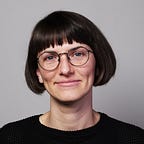Natural Geometries of Urban Form
Why do trusses become thicker when they span longer distances? Why do buildings tend to top out at a particular height? Why do the character of neighborhoods within cities differ when they expand beyond a particular size? While we might not always consider the physical limitations and characteristics of cities and buildings as having fixed rules, this can actually be quite useful way for understanding physical and spatial relationships when building computational models.
Building Blocks
In both the natural world and the simulated world it is useful to think of and define standard building blocks that make up a system. While standard building blocks are made of the same unit, when merged together they can create complex variety. When looking at an elephant, human or a cat in a microscope each is made up of the same fundamental building blocks — cells. Or at an even smaller scale everything in our material world could be modeled as atoms.
In architecture and urban design, defining standard building blocks is useful in creating complexity out of the aggregation of these individual units. A toy model of a building might be made out of standard bricks, or full prefabricated apartment units like the Nagasaki Capsule Tower. In games like Minecraft — standard building blocks might be the cubes. Standard building blocks may also be considered as small as the pixels or 3D voxels that create a model. Embedded in each individual building block might be greater level of complexity. In city simulation games a building block might be an entire building.
In structural or framing simulations, a building block might be the individual wood or steel members. However the rules for how these building blocks go together would define the emergence of different compiled units. Following the typical orthogonal 16" on center rule would produce models quite distinct from models where the length of members are allowed to change or join at varied angles.
Parameters and Natural Geometries
Before the invention of computers the biologist and mathematician D’Arcy Wentworth Thompson looked to math to describe the form and logic of biological systems. The main theme of his book, “On Growth and Form” was that the biologists at the time overemphasized evolution as the key determinant of the form of living organisms, and underemphasized the role of physical laws. He described how some forms are more likely to occur in nature than others regardless of their evolutionary function, while some forms are a complete mathematical impossibility.
His significance in architecture stems from his “theory of transformations” on the simple rules that add to increased variety in biology, showing how mathematical transformations could describe a variety of species. With the emergence of computing, scientists such as Richard Dawkins pushed these ideas forward by writing simple algorithms that varied small parameters in digital creatures to create wide variety of forms in his book, “the Blind Watchmaker”. His book noted how with simple programs, one could create and evolve creature-like forms.
You’re probably already relatively familiar with geometric transformations from the world of design computation and can see how varied parameters create a wide range of varieties in architecture. Take for example the webbed surface below. When adjusting its boundary curves or control points we can imagine the range of varieties that would allow this surface to distinct surfaces and spaces. Many firms have specialized in digital fabrication building tools to create varied parametric forms. Some interesting research and companies to follow: SOFTlab, Carrie McNelly, Nervous System, The Living.
However, finding rules for varied patterns within buildings and urban form is not a new phenomenon. In the 1960s in “A Pattern Language” the architect, Christopher Alexander created incremental, organic, rules to design that influenced the extreme programming movement. Here we can see a set of standard rules that might make up a variety of possible urban forms. A street might vary but has rectilinear buildings that orient around its notes and lengths.
What might we consider the building blocks of a chair? A house? A city? At these varied scales, what might a simulation choose to represent?
